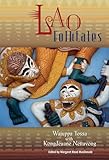Visit Luang Prabang Laos
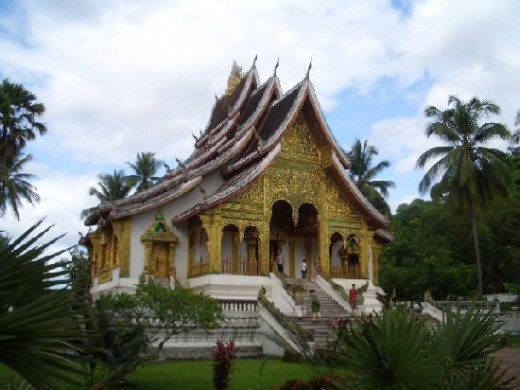
Monarchs of the Luang Prabang
- Khun Lo : Warlord who founded Luang Prabang
- Fa Ngum: Prince of Luang Prabang that founded Lan Xang
- Oun Kham: King who ruled under the French Occupation
- Kham Souk: (Zakarine) King who wanted sovereignty
- Sisavong Vong: Became King of the Kingdom of Laos after French Occupation
A UNESCO World Heritage Site
Steeped in history and tradition, Luang Prabang is Laos' Crown Jewel. Inducted into the United Nations Educational, Scientific, Cultural Organization (UNESCO) in 1995 as a World Heritage Site, Luang Prabang is sometimes referred to as "The Last Shangri-La." According to the New York Times in 2008, Luang Prabang is the "Number one tourist destination in the world." You can read the NY Times article titled, "36 Hours in Luang Prabang, Laos."
A Cost Effective Vacation
Once you are in Luang Prabang, you'll find that your money goes a long way. For starters, hotel rooms start under US$20 for a decent room to over US$80 for the most luxurious rooms available. Three-day hiking and trekking packages start at around US$60 and meals range from UNDER US$1 to about US$8! Beer Lao, the country's number one beer can be bought from any vendor for less that US$1. In all honesty, the majority of your money will go is to pay for airfare as that is usually not cheap.
Alms Giving at Dawn
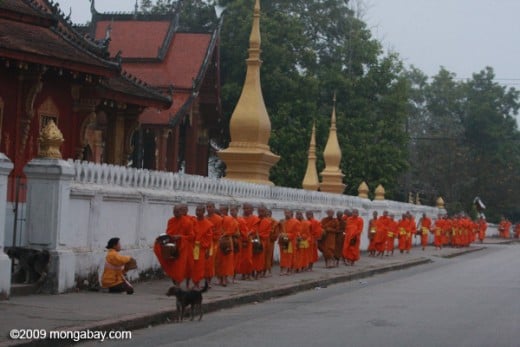
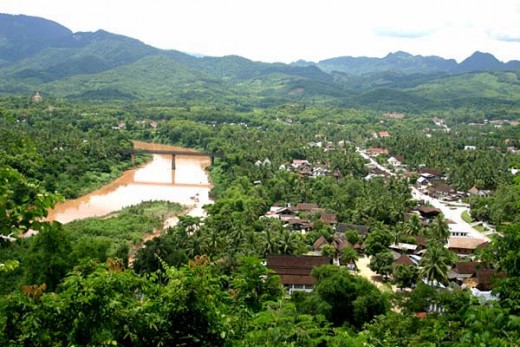
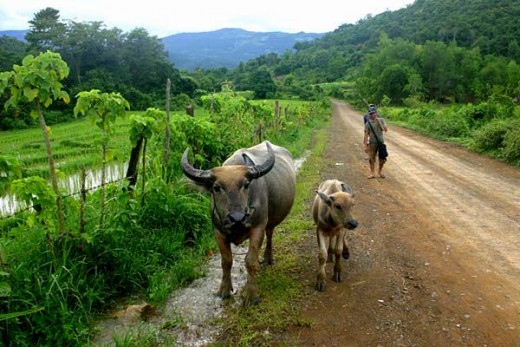
A Big City with a Small Town Attitude
Although Luang Prabang is now a world reknown city, it has a small town feel. Thousands and thousands flock to Luang Prabang annually and enjoy its coziness and friendliness despite the fact that it boasts a population of approximately 103,000 citizens and a whopping 30 wats or temples!
Notable Web Sites to Visit
- Luang Prabang travel guide - Wikitravel
Open source travel guide to Luang Prabang, featuring up-to-date information on attractions, hotels, restaurants, nightlife, travel tips and more. Free and reliable advice written by Wikitravellers from around the globe. - Luang Prabang, Laos: Traditional and Historical Architecture
Photos and description of the architecture of Luang Prabang, Laos
Pak Ou Caves or Tham Ting Caves
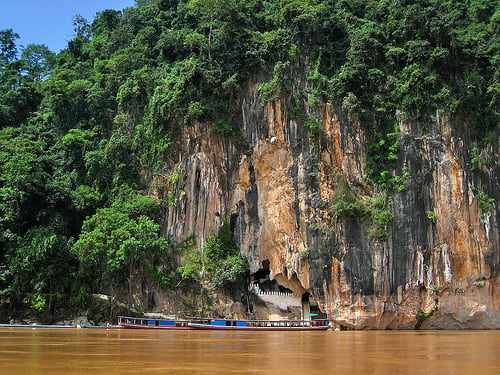
Please click to enlarge
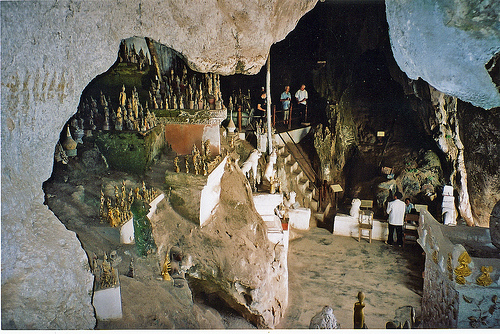
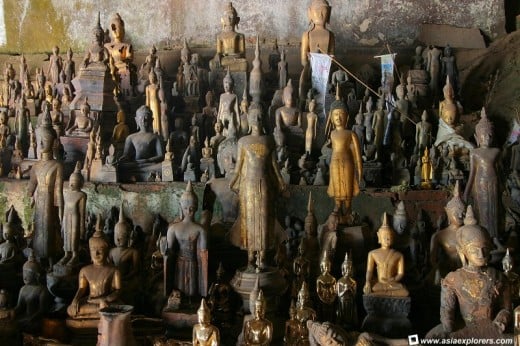
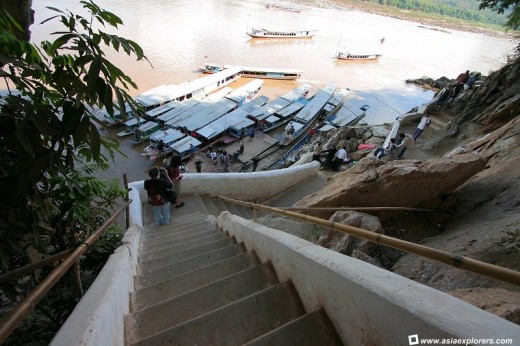
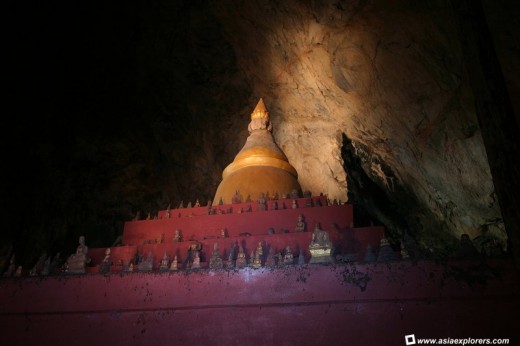
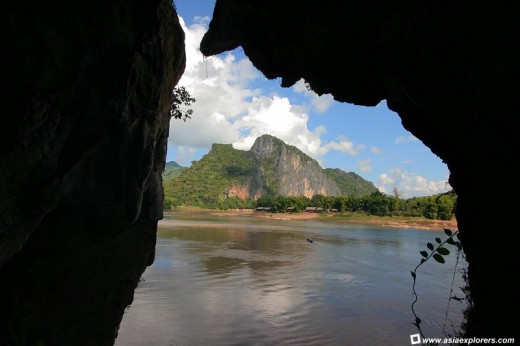
The Cave at the Mouth of the River
A two hour boat ride from Luang Prabang will gain you access to one of Laos' natural wonders. Pak Ou Caves and Tham Ting are synonymous with one another. Translated in Lao, Tam Ting means, "The Cave of One-thousand Buddhas" while Pak Ou in Lao means, Cave at the mouth of the river. Either reference is correct. Laos' Tham Ting Caves are a set of sacred, natural wonders enjoyed and praised by many. As the name suggests, the caves hold in total in their possession approximately 4,000 thousand Buddha statues or figurines all ranging in different sizes and interpretations. Visitors that frequent the caves pay tribute to the many Buddha statues and ask for salvation and good fortune in their prayers.
Before Laos became a nation of Theravada Buddhists, the people of Laos were animists; its people believed in worshiping phi or spirits. To this day, paying homage to the deceased ancestors and loved ones is a long-standing tradition.
There are two sets of caves in the Pak Ou or Tham Ting Cave system: The Upper Caves and the Lower Caves. The Upper Caves (can only be accessed via the Lower Caves first) extends approximately 54 meters into a dark, natural corridor. The Upper Cave is about 60 meters above the Mekong River. On the left side of its entrance is a wooden water channel in which the many statues are ceremonially bathed. Depictions of swans and dragons can be view throughout. Inside the Lower Cave, approximately 2,500 of the 4,000 Buddhist statues or figurines are housed. The majority of the Lower Caves' Buddhist statues are the works of artisans loyal to the King between the 18th and 20th century. The Tham Ting or Pak Ou caves can only be accessed via boat along the Mekong River.
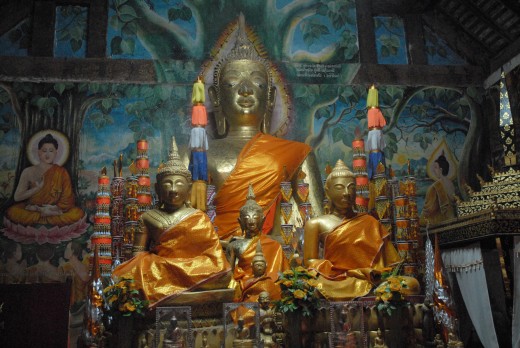
Please click to enlarge
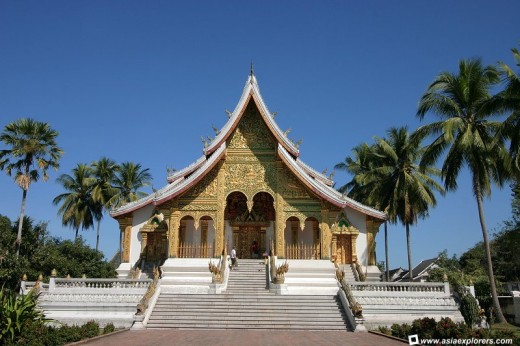
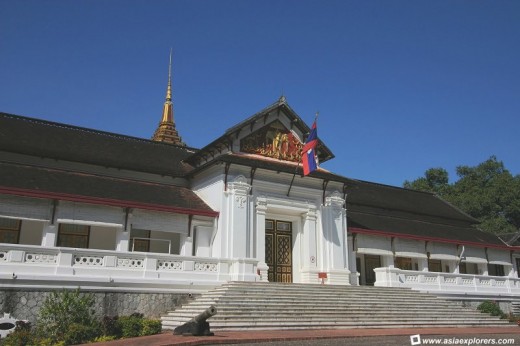
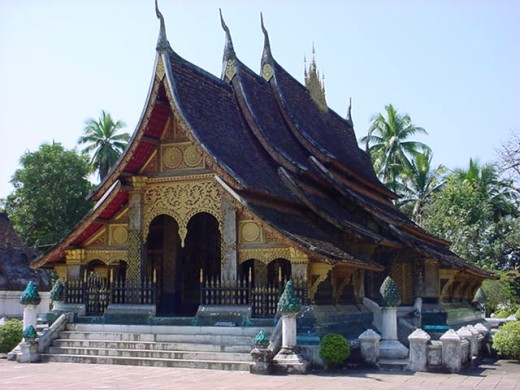
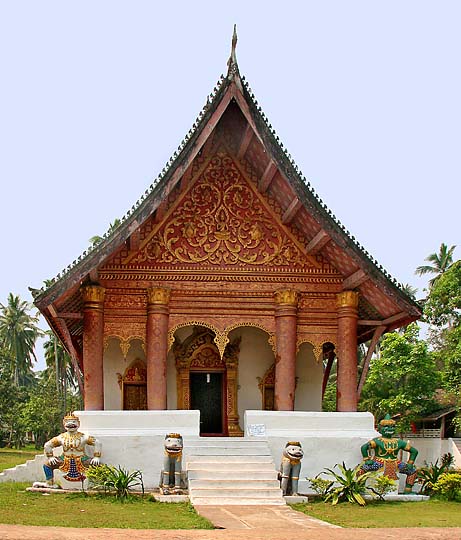
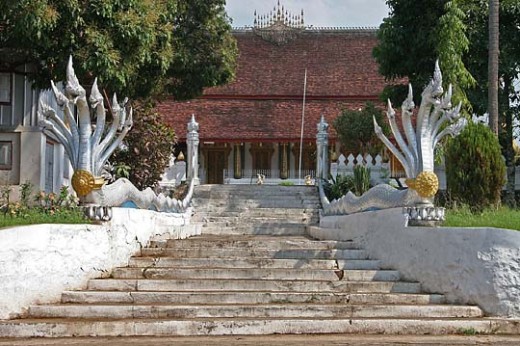
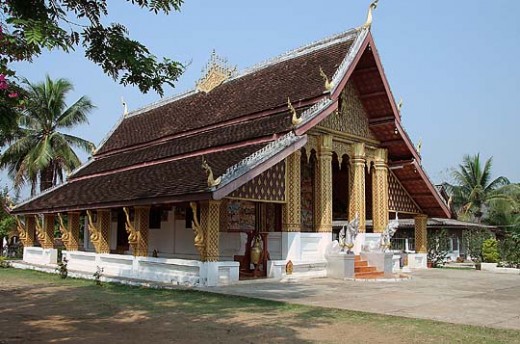
What is a Wat?
A wat, is simply a place of worship. More commonly however, a wat provides housing for monks, a place in which holds an image or statue of Buddha and another room for learning. Over the years, the word wat has become synonymous when describing ancient ruins or temples.
- Wat Haw Pha Bang: Located on the northeast corner of Haw Kham Royal Palace Museum grounds, Pha Bang holds within it a sacred image (statue) of Buddha comprised of 90% gold! Wat Haw Pha Bang is a relatively new structure as it was just completed in 2006!
- Wat Haw Kham Royal Palace Museum: Facing sacred Mount Phousi and situated between the Mekong and Khan Rivers, the "Hall of Gold" Royal Palace Museum is a blend of Lao and French Beaux Arts architectural and motifs that sought to symbolize ties between Luang Prabang and the ruling French colonial government, built between 1904 and 1909
- Wat Xieng Tong: Built ca. 1560, Wat Xieng Tong or the "Golden City or Golden Tree Monastery" is the most historically significant and impressive of Luang Prabang's many wats
- Wat Aham: Built ca. 1818, the "Monastery of the Opened Heart," Wat Aham is a meeting ground between the animist religion of spirit guardians and Theravada Buddhism. Note the guardian tigers on either side of its steps and the temple guardians of Ravana and Hanumana at each corners of the porch.
- Wat Mahathat: Lao historians estimate Wat Mahathat construction to be sometime in the 16th Century and is also known as the "Monastery of the Stupa." It is one of the most attractive of all of Luang Prabang's wats. Two seven-headed Nagas are situated on either side of the staircase. A statue of the Earth Goddess is depicted as wringing her hair to drown the enemies of the Buddha.
- Wat Ho Xiang: Wat Ho Xiang (built ca. 1705) was named in honor of a 1548 ceremony which was presided over by King Setthathirat. One of the most interesting aspects of Wat Ho Xiang is that on its front entrance there is a mural depicting humans in heaven and hell.
Please click to enlarge
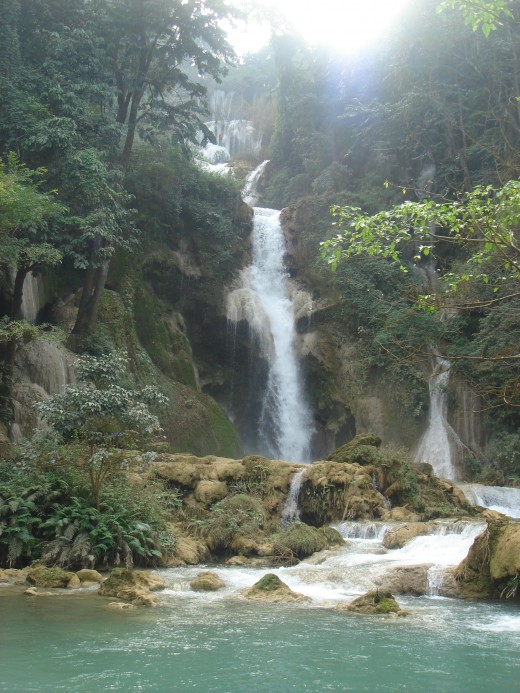
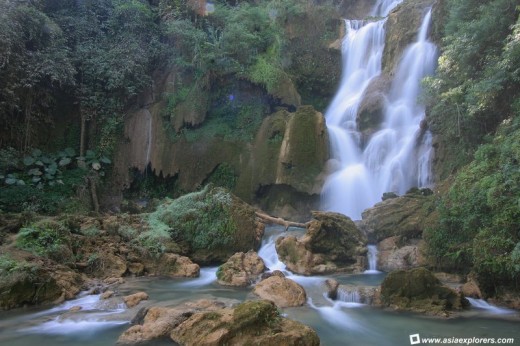
Kuang Si Falls
About 29 Kilometers or 18 miles from Luang Prabang (one hour away from Luang Prabang via Mekong River by boat) Kuang Si Falls is a marvel to behold. Kuang Si Falls (sometimes spelled Kuang Xi Falls) is 60 meters high (approximately 180 feet) and has between 10 to 15 cascades that fall into blue and turquoise pools. It is a favorite side trip for travelers and adventurers alike.
There is more than one way to reach Kuang Si Falls, as a majority of the tourists that visit opt to rent a bicycle (which is very common) from Luang Prabang (between 27 to 29 kilometers from the city) or take, although comparatively much more expensive, the minibus to get there. It is important to note that the minibus does run on its own stringent schedule and so eliminates the freedom to do what you want. I highly recommend taking the boat ride, despite the fact that it may get a bit getting use to.
Mount Phousi
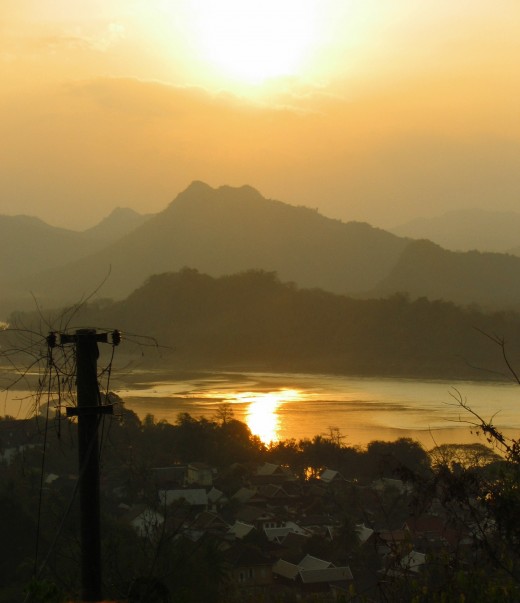
Please click to enlarge
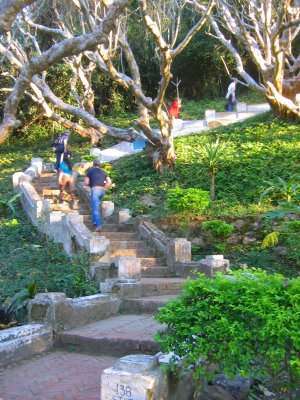
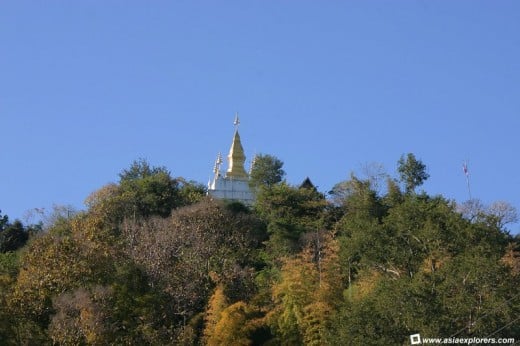
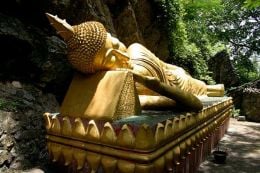
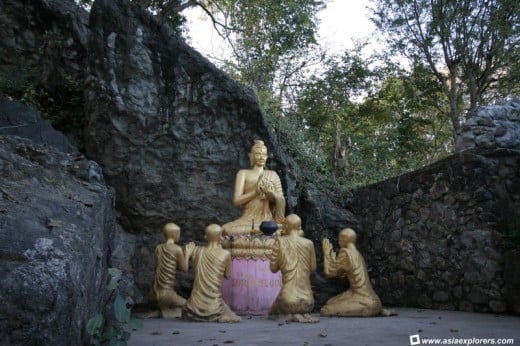
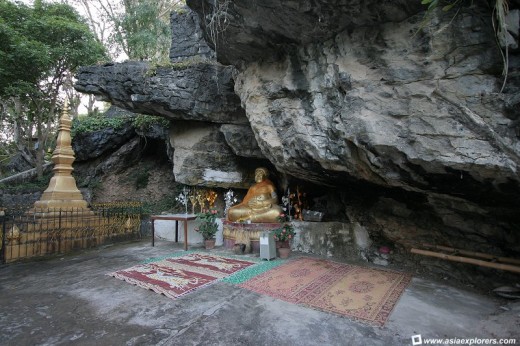
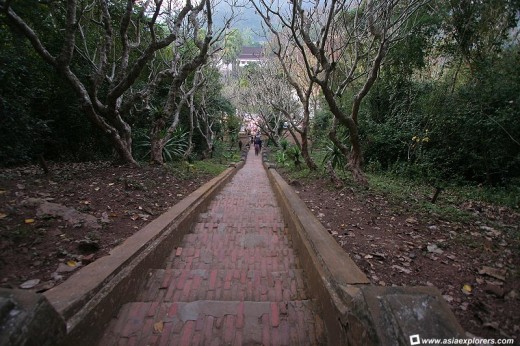
Two Ways to Reach Heaven
Built in 1804, Mount Phousi or Mount Phu Si, is situated at the very heart of historic Luang Prabang. Interestingly enough, Mount Phousi ls between the Mekong River and the Khan River making it very navigable by water. It also has two ways in which to reach its summit. The first is way is Phousi Road (a total of 355 steps which usually takes 2 hours) which is also known as Thanon Ratsayong and the second being the other staircase called Sisavangvong Road which is also known as Thanon Phithosalat. The famous stairways are frequently referred to as "The Stairways to Heaven."
The Three Physical Forms of Buddha
Halfway up Phousi Road, one can stop to rest and see Wat Tham Phu Si where the Rotund Buddha resides...As a child, I once asked my father why certain depictions of Buddha were of him in the form of a mere skeleton, in another he is conceptualized as a beautiful being, and in another, rotund and jolly. He told me, "The starved Buddha is Siddhartha Gotauma (pre-Buddha) who when first seeking enlightenment, sought refuge with the aesthetics who lived on only six grains of rice a day. Siddhartha broke his oath one day while standing on the shore of a lake. A young village girl who saw him who was concerned for his health offered him milk and food, in which he accepted. The middle Buddha is the most widely depicted Buddha as he is the Buddha of Enlightenment who lived to be the age of 80. The Third Buddha or Buddha of Good Fortune (most widely depicted by the Chinese) intentionally gorged himself so as to repel women admirers as his immense form deterred their attraction to him." So there you have it.
At the Summit of Mount Phousi
At the summit of Mount Phousi is Wat Chom Si which offers the best view of Luang Prabang as one can view it entirely, including Wat Haw Kham Royal Palace Museum and both the Mekong and Khan Rivers. Be aware however that the base of Wat Chom Si grows crowded with tourists as the Luang Prabang sunset is its greatest feature at the end of the day. The price of admission is 17,000 Kip (Lao currency) or about 2 US dollars! Interesting to note is that in addition to the base of Mount Phousi, there is a rusted-out Russian anti-air craft gun. As seen in the picture to the immediate right of this article, the fee to gain admission to Mount Phousi must be paid at the entrance, at Wat Haw Kham Royal Palace Musem.
Lasting Impressions
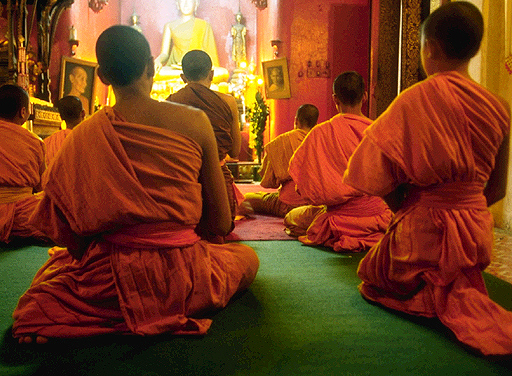
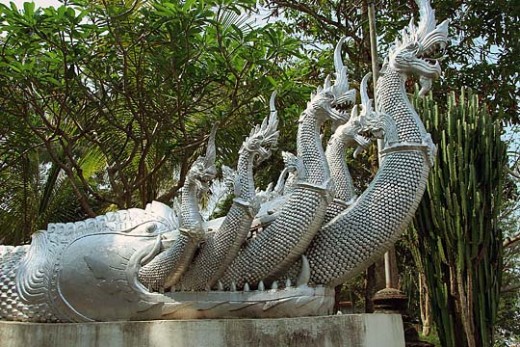
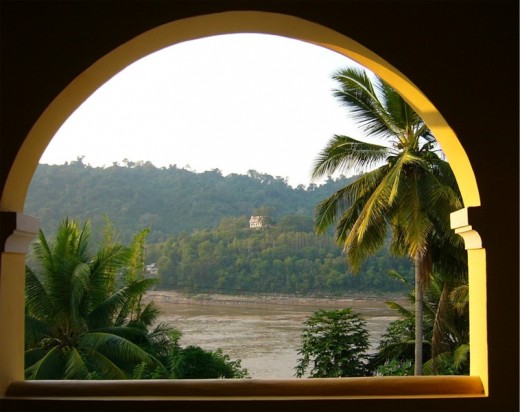
Thinking of Visiting Luang Prabang? These Sites May Help:
- Luang Prabang Travel Guide, Laos | AsiaExplorers
Luang Prabang is a Unesco World Heritage Site in Laos. - Luang Prabang travel guide for backpackers. Includes hotel and hostel reviews
The Lao province of Luang Prabang and its eponymous capital are two of the most atmospheric and popular destinations in Laos. The riverine town of
Kuang Si Falls and Hotels
- Luang Prabang Hotels: Compare Prices for Hotels in Luang Prabang, Laos and Book With Expedia
Check and compare prices for more than 9 hotels in Luang Prabang, Laos. Luang Prabang hotels available at Expedia. And Expedia Best Price Guarantee. - Laos Hotels & Travel Guide - Laos Information
Laos Hotels & Travel Guide - Laos Information - Kuang Si Falls | Kuangsi Falls | Travel Story and Pictures from Laos
Kuang Si Falls Kuangsi Falls - Travel story and pictures from
Bonus Video
I Do It Because I Can! (Hub 11/30)

- Beer Lao
As I recall, I first learned about Beer Lao from a T-Shirt. While walking around one day at my Buddhist Temple fair grounds during a festival, I spotted a Lao guy not much younger than me walking around... - The Grand Canyon's West Rim
The West Rim of the Grand Canyon In October of 2006, I was asked by my sister and her husband to go to Las Vegas for ten days. Aside from the fact that my job was killing me and that I needed a break, Vegas... - An Ode to the Big Blue Wrecking Crew
In September of 2007, I was given the rare opportunity to attend the New York Giants home opener at Giants Stadium. Just as soon as I was offered the ticket to go and see my favorite team in the known... - Lawrence Taylor: A Force of Nature
Lawrence Taylor was a god to me. He epitomized what a football player should be. The best way I can describe him is that he moved like lightning and hit like thunder. He showcased superhuman abilities and...

